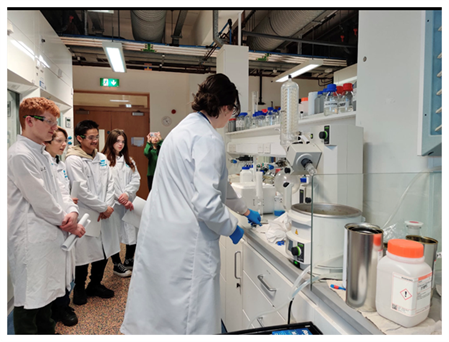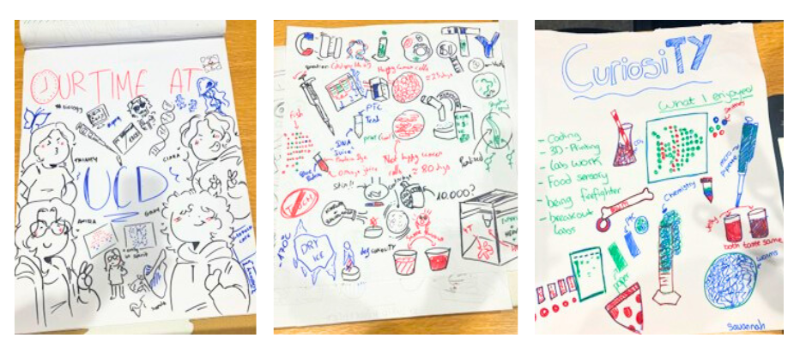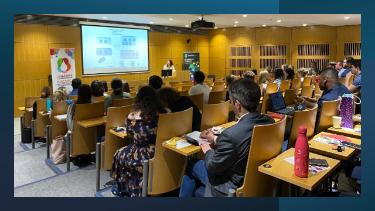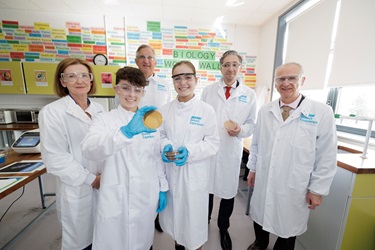'CuriosiTY' a hit with early career researchers and TY students

I recently had the privilege of sharing my work with a group of secondary school students, through the SFI Discover for CuriosiTY programme, in Systems Biology Ireland and UCD Conway Institute, co-ordinated by Anna Wedderburn and Siobhan Keenan, and managed by Elaine Quinn (Conway) and Eadaoin Mc Kiernan (SBI). This programme brought postgraduate researchers from the Conway Institute together to take part and introduce students to the world of STEM.
The week kicked off with a researcher showcase, allowing each of us researchers to show our journey in STEM, and our current areas of research.
This was followed by some laboratory breakout sessions throughout the week, where I gave 4 small groups of students hands-on experience in the world of chemistry. I decided to centre the lab session around carbon dioxide.
The sessions began with observing the interaction of dry ice with warm, soapy water, resulting in a flurry of smoky bubbles, full of carbon dioxide. The extinguishing power of carbon dioxide was demonstrated by placing dry ice in a beaker of water and pouring the dense gas over a lit tea candle, causing it to extinguish, showing some properties of carbon dioxide.
Next the concept of respiration was explored, linking respiration and carbon dioxide exhalation. I pre-made some lime water for the students to experiment with. The idea here was to send home the message that even though carbon dioxide gas is a colourless, odourless and tasteless gas, we can detect its presence. Each student was given a beaker of lime water with a straw to blow bubbles and observe the colour change from colourless to milky white, and we all had a competition to see who could get their limewater to change colour the quickest.
To wrap up the laboratory session, students engaged in a ‘fire-fighting’ activity. I wanted to show an important use of carbon dioxide, and how to make carbon dioxide balloons at home with some common household items (with adult supervision of course!) Students combined a balloon full of baking soda and a bottle of white vinegar, resulting in a balloon full of carbon dioxide gas. One-by-one, a tea candle was lit and students got to release their carbon dioxide-containing balloons, extinguishing the flames. This hands-on experience allowed students to showcase their inner scientists and left them both excited and knowledgeable.
Each session was concluded with a tour of the lab, and a Q&A session where they asked me questions about chemistry, the Leaving Cert, and what a typical day in my life looks like.

The final thing at the end of this week was a TY showcase. Each TY student stood up in front of everyone and gave a summary of their week, in the form of a poster or a presentation. It was really heart-warming hearing how much each student enjoyed their experience, and even though not all of them enjoyed it, it gave them a small bit of clarity on their future, and an insight into typical college life from spending a week on UCD’s campus. Some students talked about how much it meant to them to see a lot of women in STEM, which is also an important part of this programme. Some students enjoyed seeing the difference between the biology and chemistry research labs, solidifying their subject choices for the Leaving Cert.
All in all, participating in the CuriosiTY week was a great experience, and I can’t wait for the next one!

